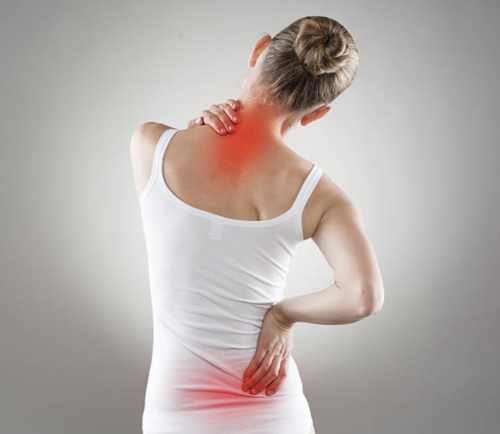Is Tension Actually Bad?
By: Alex Pennington March 2020
TENSION
Tension is the killer of a healthy functional body. Or is it? In the fitness and health industry we often hear about tension and how it’s unwanted and we must get rid of it. This idea has inspired many fitness professionals, yoga studios, and MFR (Myofascial Release) tutorials to concentrate on getting rid of these nasty tensions. But what exactly is tension and why is it bad? Let’s take a deeper look at what your tightnesses mean.
WHAT ARE TIGHTNESSES DOING IN OUR BODY?
Tightness refers to muscles in our body feeling restricted or even painful. These tightnesses are effects of overusing specific areas(muscles) in our body that coincide with specific patterns in our movement creating overcompensation of work over other muscles. Or simply, individual muscles working in place of chains of muscles. For example, if you feel tightness around your hips it may mean that the muscles that are painful are overworking compared to the correct muscles that should be being used during any standing, walking, or other movements. Basically, these tight muscles are the only areas that are keeping you from falling completely to the ground. If these muscles didn’t engage, your body would have no stability at all. So, is releasing or stretching these muscles the best option? Probably not.
OUR HABITS AND MOVEMENT PATTERNS
When looking at pain and stiffness we need to first approach why this is happening. Why are these muscles overcompensating for other ones? The primary reason overcompensation is happening is because of dysfunctional movement and stability patterns within our body. These patterns are a product of a few things: genetics, habits, past injuries, sedentary lifestyles, and a lack of knowledge. These long-term dysfunctions of our bodies, over time, create hardwired poor movement patterns to the point where it is very difficult to fix them without implementing specific training to get out of those specific dysfunctions.
THE PROBLEM WITH STRETCHING AND RELEASING
As more studies and data are produced on stretching, we are seeing a trend that these techniques are not helping much and might be making things worse. A major issue with stretching is that it does not represent actual movement patterns we typically see ourselves in(i.e. standing, walking, lifting objects from the ground). How many times have you been in a position where you need to bring your knee to your chest? Or needed to bend down and hold your ankles? These are not functions that you typically would do throughout your day. So why are we told to do them? As mentioned before, our tightnesses are overcompensations for other muscles not working. So, what happens when you release a muscle that is being used to hold you up and stabilize you? More compensations, and many times even weaker patterns than before. Releasing or myofascial release(MFR) can also be looked at similarly. Releasing muscles that are being used for your stability and movement can have a similar effect as stretching to creating more compensations. The only thing that makes MFR a little better than stretching is that you are not hypermobilizing your body to facilitate a muscle release. Hypermobility is when muscles are stretched past functionality, disconnecting chains of muscles.
DON’T THROW OUT THE BABY WITH THE BATHWATER
Stretching and MFR are not completely bad. There can be a lot of benefits to using these techniques. The issue with them is when we don’t know what chains of muscles need to be strengthened. So, what chains of muscles need to be strengthened? This is when things get complex. Everyone is different in their dysfunctions and movement patterns. There is not one cookie cutter approach to fixing everyone’s dysfunctions. It can take years to understand biomechanics and most fitness professionals don’t go down this path of educating themselves.
COMBAT TENSION WITH RETENSION
When muscles feel tight, it is typically the effect of other muscles not being engaged enough to create a balance between them. Retension the non-tensioned. Let’s call the non-tensioned muscles Flaccidness. Flaccidness is a major culprit behind our dysfunctions. Flaccid muscle chains create the reciprocating tightnesses and pains of our bodies. The more flaccid our muscles chains are, the worse our problems become. This is why Yoga and other stretching systems can make things worse in the long run. Over stretching muscles causes them to lose their elasticity, which then creates flaccidness. Think of stretching an elastic band over and over. What happens? Our bodies need elasticity in order to function. The more you tug the less the muscles will tug back when you need them to.
FUNCTIONAL PATTERNS (YOUR BIOMECHANICAL CONSULTANTS)
Functional Patterns is a training company that emphasizes functionality and biomechanics(muscle movement connections). The training encompasses many different modalities to create functionality within an individual’s body. For example, specific strength training to re-pattern dysfunctional movements, MFR to help muscles connect better to their chains of muscles, breathing techniques to connect the superficial musculo-skeletal system to the internal cardiovascular system. All of this creates a holistic approach to exercise and strength training. Anything that you can think of involving health is covered somewhere within Functional Patterns. To learn more about Functional Patterns, go to functionalpatterns.com. Here they also have a world map showing where the nearest Functional Patterns Practitioner is to you. Link here- https://practitioners.functionalpatterns.com/
So, is tension a bad thing? Not necessarily. Tension can be looked as a positive thing. Having proper tension throughout your body is the best thing we could hope for in order to feel strong, happy, and comfortable in our day to day lives.
“Train intentionally, not habitually” – Naudi Aguilar(Founder of Functional Patterns)


